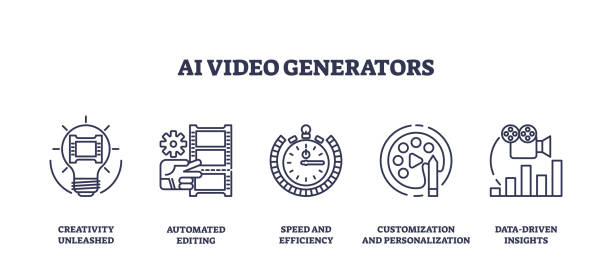The rise of artificial intelligence (AI) has transformed numerous industries, and content creation is no exception. AI video generation is an emerging technology that allows creators to produce videos quickly and efficiently using AI-powered tools. While this innovation offers exciting opportunities, it also raises questions about its impact on careers in content creation.
This blog explores how AI video generation is changing the landscape for content creators and what it means for the future of digital media.
Understanding AI Video Generation
AI video generation uses machine learning algorithms to create, edit, or enhance video content. Key features include:
- Automated video editing: AI can cut, trim, and arrange footage based on scripts or prompts.
- Text-to-video conversion: AI can turn written content into animated or live-action videos.
- Deepfake and synthetic media: Realistic avatars and voices can be generated digitally.
- Personalization: AI can tailor videos for different audiences automatically.
These capabilities drastically reduce production time and allow creators to scale content more efficiently.
Opportunities for Content Creators
1. Increased Productivity
AI tools handle repetitive editing tasks, freeing creators to focus on storytelling and creative ideas. This means faster turnaround times without sacrificing quality.
2. Cost Efficiency
Producing high-quality videos traditionally requires cameras, lighting, and a production team. AI video generation reduces these costs significantly, making video creation more accessible.
3. Creative Experimentation
Creators can explore new formats, styles, and effects without extensive technical knowledge. AI offers tools to experiment with animation, transitions, and visual effects.
4. Personalized Content for Audiences
AI can generate multiple versions of a video tailored to different demographics, increasing engagement and viewer satisfaction.
Challenges and Concerns
While AI video generation offers benefits, it also poses several challenges:
- Job Displacement Risks: Routine editing or animation jobs may see reduced demand.
- Quality vs. Authenticity: Over-reliance on AI can lead to generic content lacking human nuance.
- Ethical Issues: Deepfake technology and synthetic media can be misused for misinformation.
- Skill Shift: Creators must adapt to new AI tools and learn to integrate them effectively.
Despite these concerns, the technology is more likely to augment human creativity rather than fully replace content creators.
How Content Creators Can Adapt
1. Embrace AI Tools
Learning AI video generation platforms like Runway, Pictory, or Synthesia allows creators to enhance productivity and creativity.
2. Focus on Storytelling and Originality
AI can handle production tasks, but human creativity, storytelling, and emotional connection remain irreplaceable.
3. Upskill Continuously
Understanding AI, animation, and video editing software is crucial for staying relevant in the evolving industry.
4. Collaborate with AI, Not Compete
Use AI as a collaborator to generate ideas, automate mundane tasks, and focus on high-level creative work.
The Future of AI Video in Content Creation
- Hybrid Workflows: Human creativity combined with AI efficiency will become the standard.
- More Accessible Video Production: Individuals and small teams can produce professional-quality videos.
- Dynamic Personalization: Videos will adapt in real-time to audience behavior and preferences.
- New Career Paths: AI will create demand for AI specialists, prompt engineers, and video strategists.
The rise of AI in content creation is transforming the industry, presenting opportunities for growth and innovation for those willing to adapt.
Final Thoughts
AI video generation is not a threat but a powerful tool for content creators. By embracing AI, focusing on originality, and continuously learning, creators can enhance productivity, reduce costs, and reach wider audiences. The future favors those who see AI as a collaborator that amplifies human creativity rather than a replacement.

